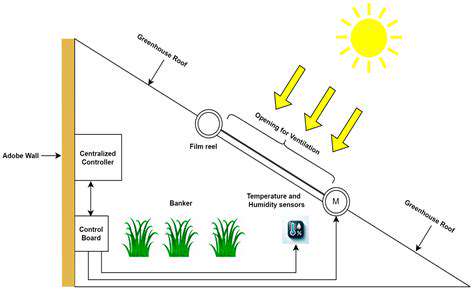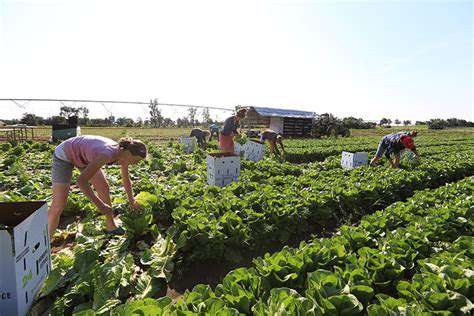How to Store Lettuce: Keep Greens Crisp
Enhancing Lettuce Storage with Humidity-Controlled Environments

Improving Lettuce Shelf Life
Proper storage is crucial for maintaining the freshness and nutritional value of lettuce. By implementing the right techniques, you can significantly extend the time your lettuce stays crisp and vibrant. This involves more than just placing it in the crisper drawer; it's about understanding the optimal environmental conditions for lettuce preservation. Proper handling during harvest and transportation, as well as the selection of appropriate storage containers, all play a significant role in extending the lettuce's shelf life. The best storage practices prioritize maintaining optimal humidity and temperature levels to prevent wilting and spoilage.
Maintaining a consistent environment within the storage area is paramount. Excessive temperature fluctuations and fluctuating humidity levels can negatively impact the quality of the lettuce, accelerating the deterioration process. By using specialized storage containers and employing appropriate packaging techniques, we can create a controlled environment that helps to preserve the lettuce's freshness and prevent premature decay. Understanding the specific needs of different lettuce varieties is also key to successful storage. Some varieties may require more humidity or different temperature ranges than others, and adapting storage methods to these individual needs can make a real difference.
The Role of Humidity in Lettuce Storage
Humidity plays a vital role in preserving the crispness and texture of lettuce. Proper humidity levels prevent the lettuce leaves from drying out, which leads to wilting and a loss of their desirable texture. High humidity levels help to maintain the moisture content within the lettuce, enabling it to stay fresh for longer periods. The goal is to create a microenvironment that closely mimics the conditions in which the lettuce was grown, replicating the natural moisture levels that contribute to its freshness.
Maintaining the right humidity levels is often a key factor in preventing spoilage. By carefully regulating the moisture content in the storage environment, we can significantly extend the lettuce's shelf life, reducing waste and maximizing the overall quality of the product. Different storage methods, such as using humidity-controlled containers or placing produce in plastic bags with a small amount of water, can help to achieve this crucial balance. Proper humidity control is often overlooked but is a critical factor in ensuring that lettuce remains fresh and edible for longer periods.
Improper humidity can lead to rapid deterioration. Dry conditions will dehydrate the leaves, causing them to become brittle and lose their crispness. Conversely, excessive humidity can encourage the growth of mold and bacteria, leading to spoilage. Finding the ideal balance is crucial to preserving the quality of the lettuce and avoiding unwanted consequences. Precise control over humidity is essential for maintaining the quality and freshness of lettuce during storage.

- Oven Baked Dinners: Less Mess, More Flavor
- Unveiling Japanese Street Food: Takoyaki and Okonomiyaki
- Exploring Middle Eastern Mezze: Hummus, Baba Ghanoush, and More
- Paleo Diet Snacks: Healthy and Compliant Bites
- Healthy Dinner Salads: Fresh and Flavorful
- Understanding Healthy Snacking for Kids: Smart Choices
- Authentic Ethiopian Lentil Stew: Misir Wot
- Homemade Cake Pops: Fun and Festive
- Authentic Argentine Empanadas: Savory Turnovers
- Kitchen Appliance Colors: Trends and Style
- Exploring Caribbean Cuisine: Jerk Chicken and More
- Understanding Sustainable Seafood: Making Good Choices